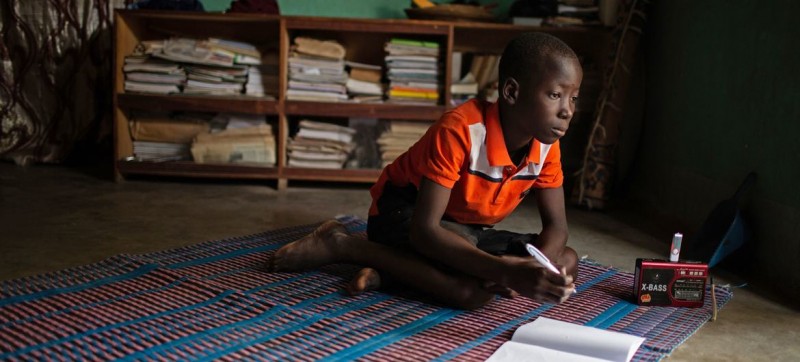A young boy studies at home in Dori, Burkina Faso. Now entering its third year, the COVID-19 pandemic has continued to hold back some 405 million school children worldwide from a full return to the classroom, according to a new report released on Wednesday by the UN Children’s Fund (UNICEF). And as 23 countries have yet to fully re-open schools, many children are at risk of just dropping out. “When children are not able to interact with their teachers and their peers directly, their learning suffers,” said UNICEF Executive Director Catherine Russell. “When they are not able to interact with their teachers and peers at all, their learning loss may become permanent. “This rising inequality in access to learning, means that education risks becoming the greatest divider, not the greatest equalizer. When the world fails to educate its children, we all suffer.” The report entitled, Are children really learning?, features country-level education data on the impact that COVID-19 school closures are having on children along with an updated analysis of the state of learning before the pandemic. The study points out that 147 million children missed more than half of their in-class instruction over the past two years – amounting to two trillion hours of lost in-person education, globally. In addition to data on learning loss, the report highlights emerging evidence that many children did not return to school when their classrooms reopened, including in Liberia, West Africa, where 43 per cent of public-school students remained out of the classroom after schools reopened in December 2020. And between March 2020 and July 2021, the number of children out of school in South Africa, tripled from 250,000 to 750,000. Around one in 10 Ugandan students did not report back to school in January 2022 after two years of school closures. Meanwhile in Malawi, the dropout rate among girls in secondary education increased by 48 per cent, between 2020 and 2021, and in Kenya, a survey of 4,000 adolescents aged 10-19 years found that 16 per cent of girls and eight per cent of boys did not return when schools reopened. “When the world fails to educate its children, we all suffer,” said the senior UN official. Pupils attend class at a pirmary school in Kasese District, Uganda. Out-of-school children are some of the most vulnerable and marginalized youth in society – least likely to read, write or do basic math. Moreover, they are cut off from the school safety nets – putting them at even greater risk of exploitation and a lifetime of poverty and deprivation. “Even before the pandemic, the most marginalized children were being left behind,” reminded Ms. Russell. “As the pandemic enters its third year, we can’t afford to go back to ‘normal’. We need a new normal,” the UNICEF chief spelled out, “getting children into classrooms, assessing where they are in their learning, providing them with the intensive support they need to recover what they’ve missed, and ensuring that teachers have the training and learning resources they need.” “The stakes are too high to do anything less”. We need a new normal – UNICEF chief Although out-of-school children suffer the greatest loss, pre-pandemic data from 32 countries and territories highlighted an already desperately poor level of learning that has only been exacerbated by the COVID-triggered education crisis. In the countries analysed, the current pace of learning is so slow that it would take seven years for most schoolchildren to learn foundational reading skills that should have been grasped in two years, and 11 years to learn foundational numeracy skills. Furthermore, there is no guarantee that schoolchildren have learned the basics at all, in many cases. A quarter of eighth graders, who are around 14-years old, did not have foundational reading skills and more than half lacked the numeracy skills expected of seven-year-old in second grade, according to the data.2 trillion hours, gone
Africa case study

Vulnerable and marginalized
Learning slowdown
The World Organization for Development has been endowed with consultative status with the UN ECOSOC since 2014. The World Organization for Development, which has consultative status wich the UN ECOSOC, develops and implements Global Initiatives to achieve the UN Sustainable Development Goals.




Comments are closed.